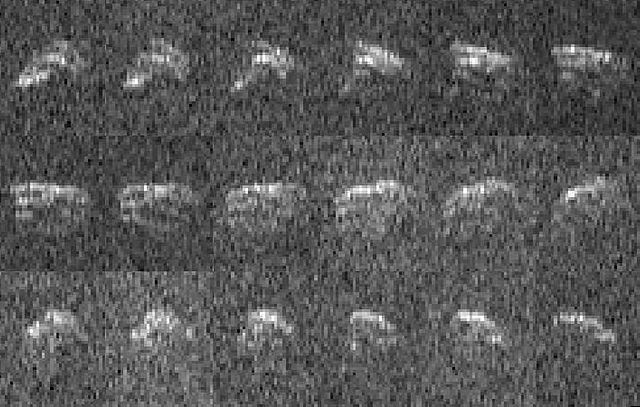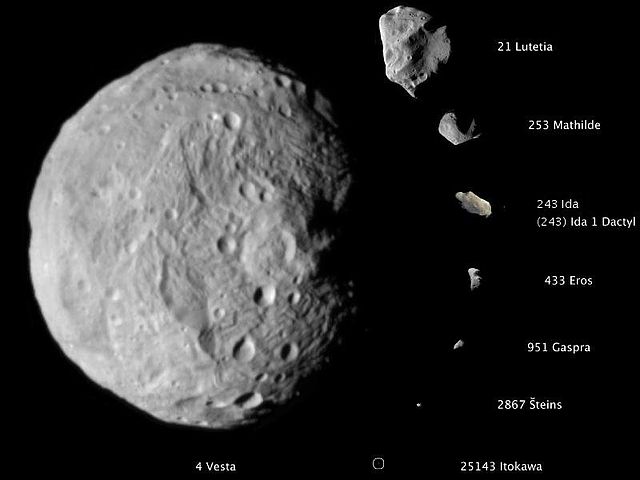A meteoroid is a small rocky or metallic body in outer space.
Meteoroids are distinguished as objects significantly smaller than asteroids, ranging in size from grains to objects up to a meter wide. Objects smaller than meteoroids are classified as micrometeoroids or space dust. Many are fragments from comets or asteroids, whereas others are collision impact debris ejected from bodies such as the Moon or Mars.
Meteoroid embedded in aerogel; the meteoroid is 10 µm in diameter and its track is 1.5 mm long
2008 TC3 meteorite fragments found on February 28, 2009, in the Nubian Desert, Sudan
Meteor seen from the site of the Atacama Large Millimeter Array (ALMA)
A meteor of the Leonid meteor shower; the photograph shows the meteor, afterglow, and wake as distinct components
An asteroid is a minor planet—an object that is neither a true planet nor a comet—that orbits within the inner Solar System. They are rocky, metallic, or icy bodies with no atmosphere. The size and shape of asteroids vary significantly, ranging from small rubble piles under a kilometer across to Ceres, a dwarf planet almost 1000 km in diameter.
2013 EC, shown here in radar images, has a provisional designation
A composite image, to the same scale, of the asteroids imaged at high resolution prior to 2012. They are, from largest to smallest: 4 Vesta, 21 Lutetia, 253 Mathilde, 243 Ida and its moon Dactyl, 433 Eros, 951 Gaspra, 2867 Šteins, 25143 Itokawa.
Vesta (left), with Ceres (center) and the Moon (right) shown to scale
Phobos








